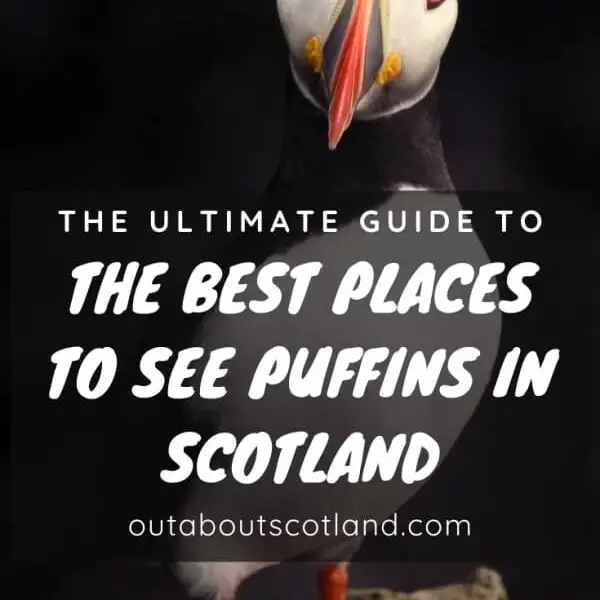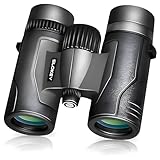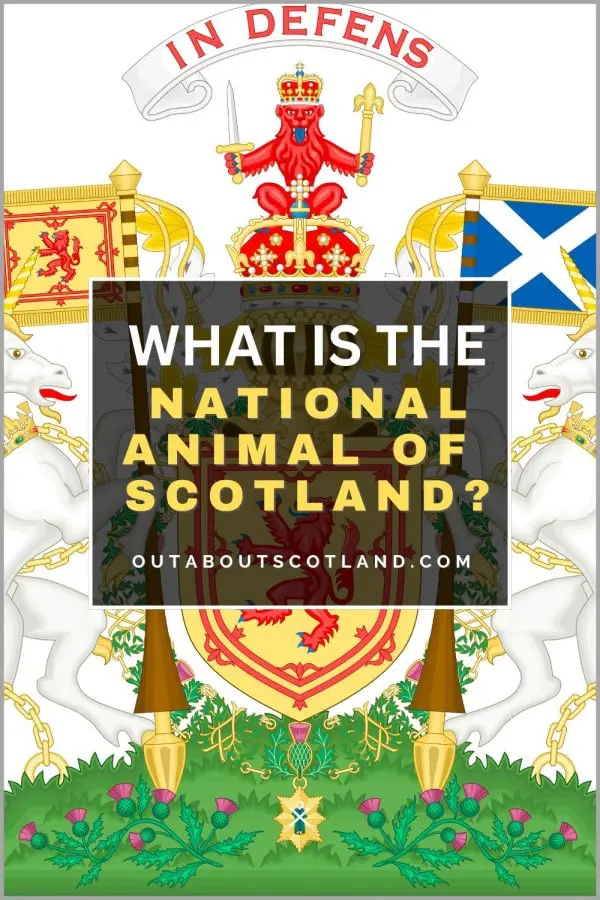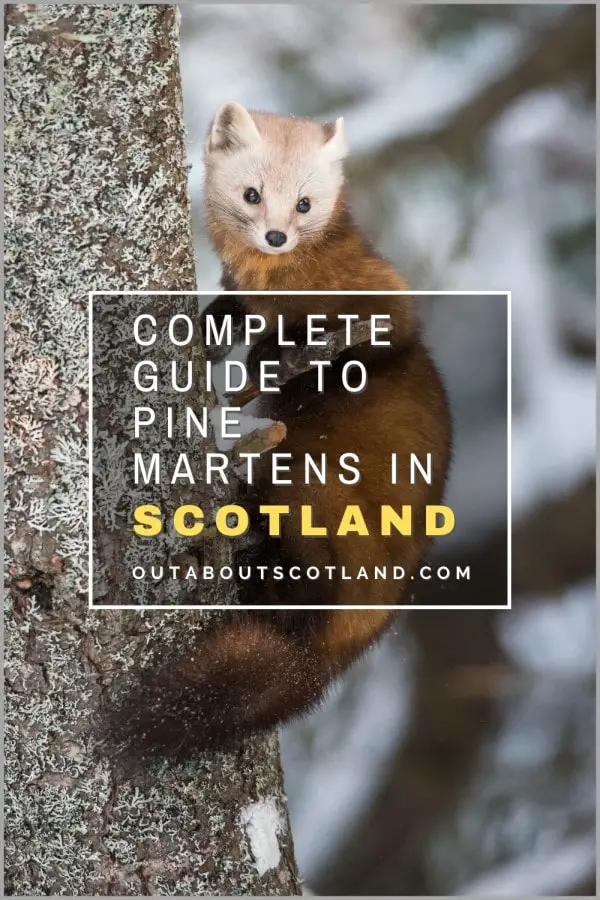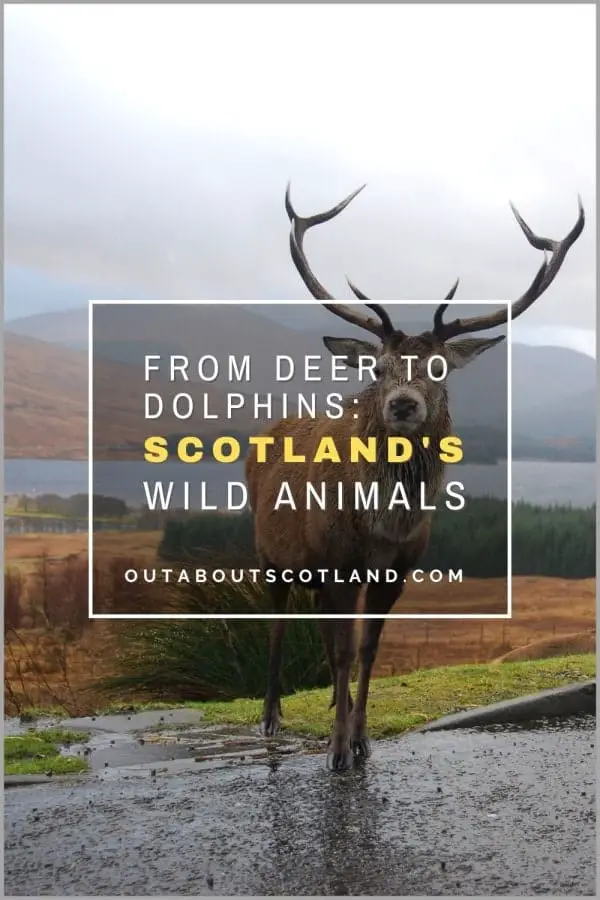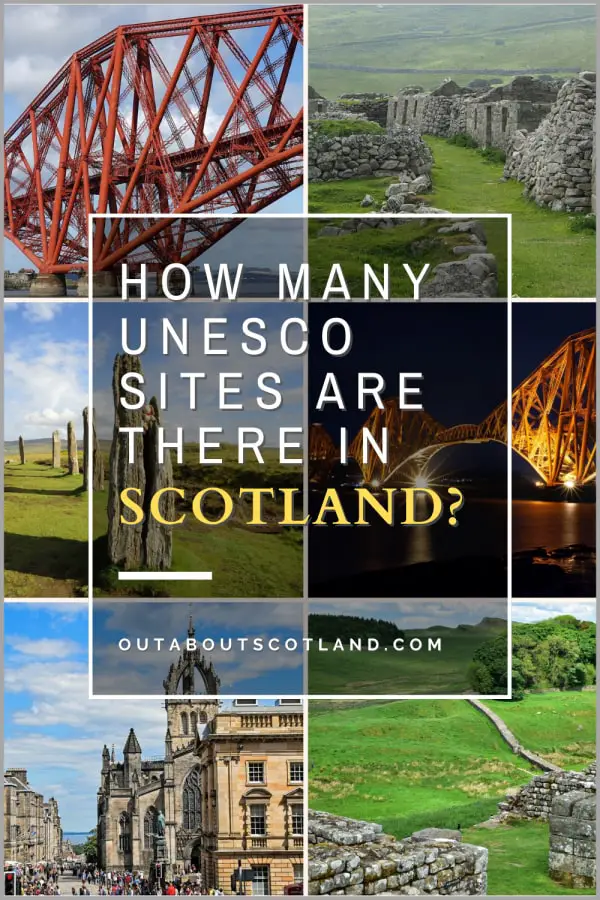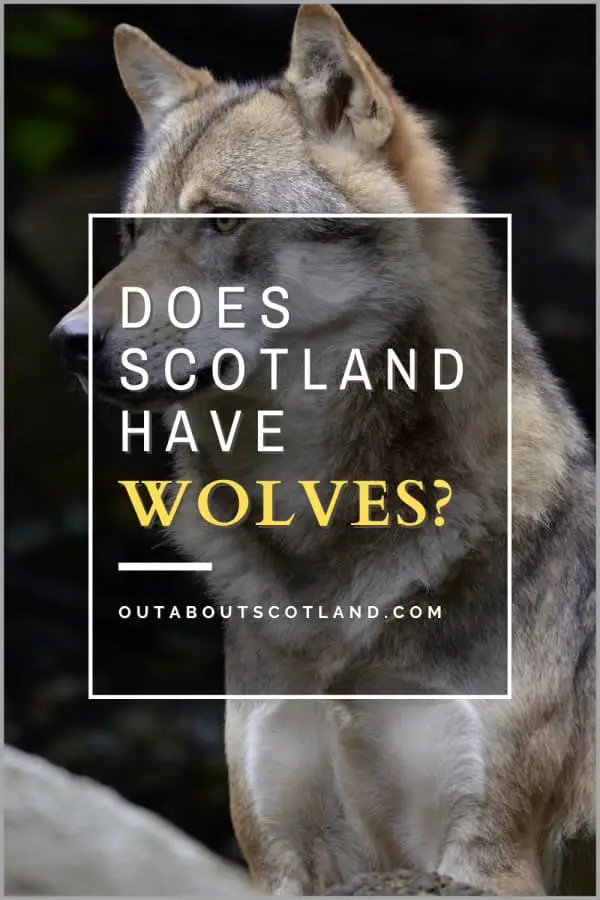Puffins are part of the bird genus Fratercula, which belongs to the auk family. Their favourite foods are sand eels, herring, and capelin (a sprat-like North Atlantic fish). Favourite nesting sites can be found at Bass Rock, St. Abbs Head, Duncansby Head, Faraid Head, Lunga, St. Kilda, and Sumburgh Head.
Discover exactly where to see puffins in Scotland in this guide, which includes puffin facts, tours, and tips for using birdwatching binoculars.
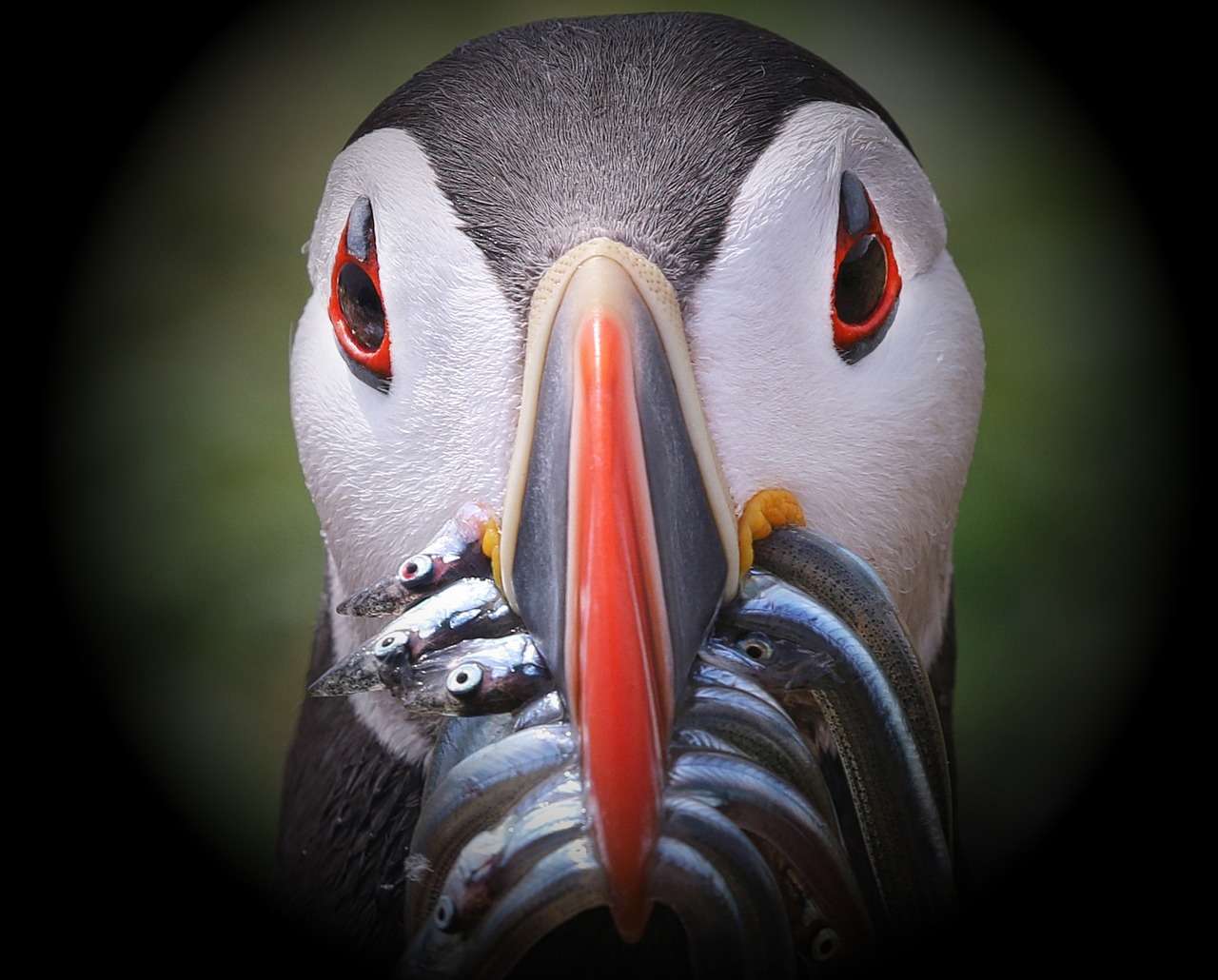
Puffins in Scotland
The Atlantic puffins we have here in Scotland are a sub-species of auk, which counts guillemots and penguins amongst their family, but all are notable for their ability to ‘fly’ underwater. If you’ve ever seen penguins at the zoo, you’ll know just how clumsy they appear on land, but get them in the water, and they transform instantly into graceful, fast-moving animals that seem as well-suited to swimming as the fish they hunt.
On the wing, these wee birds (they’re only around a foot in length with a less than two-foot wingspan) are surprisingly agile – despite how stocky their bodies are – but they have to flap their wings at high speeds to stay in the air.
According to the Scottish Seabird Centre, puffins beat their wings up to four hundred times per minute, which means they need to eat lots of fish for energy. Luckily for them, their oversized bills can hold up to a dozen at a time. As a bonus, those large crescent-shaped bills also make a great tool for attracting mates, although the vibrant bright-orange colour disappears once the breeding season is over.
Unlike many bird species, a pair of puffins will stay together for life with one staying at home to look after their young and the other out at sea looking for food, but they work together to build the nests which they return to year after year.
If you’d like to see them up close, your best bet is to visit one of Scotland’s offshore island colonies (though there are plenty of mainland coastal colonies as well) that have regular tours, or head 27 miles east of Edinburgh to see them in the Firth of Forth. I’ll cover a few of Scotland’s best puffin-viewing locations in the following sections.
Puffins in Scotland Map
- Bass Rock – East Lothian
- St. Abbs Head – The Borders East Coast
- Duncansby Head – Far North East Coast
- Faraid Head, Far North, West Coast
- Isle of Lunga – West Coast
- Islands of St. Kilda – North West Coast
- Sumburgh Head – Shetland Islands
Where to See Puffins on Scotland’s Mainland
While the majority of Scotland’s puffin colonies are found offshore on remote islands, there are several areas on the mainland where you’ll be able to see them. Although they prefer to make underground burrows on islands, on the mainland, they tend to live on cliff faces due to the protection these inaccessible locations give them.
These puffinries (yes, a collection of puffin homes is actually called a puffinry!) are usually found in remote areas of Scotland that are difficult to get close to. Therefore, if you’re hoping to see them, you might consider taking a pair of binoculars (link to my recommended optics) with you, unless you visit the Scottish Seabird Centre, which I’ll cover next.
Puffins at the Scottish Seabird Centre and Bass Rock
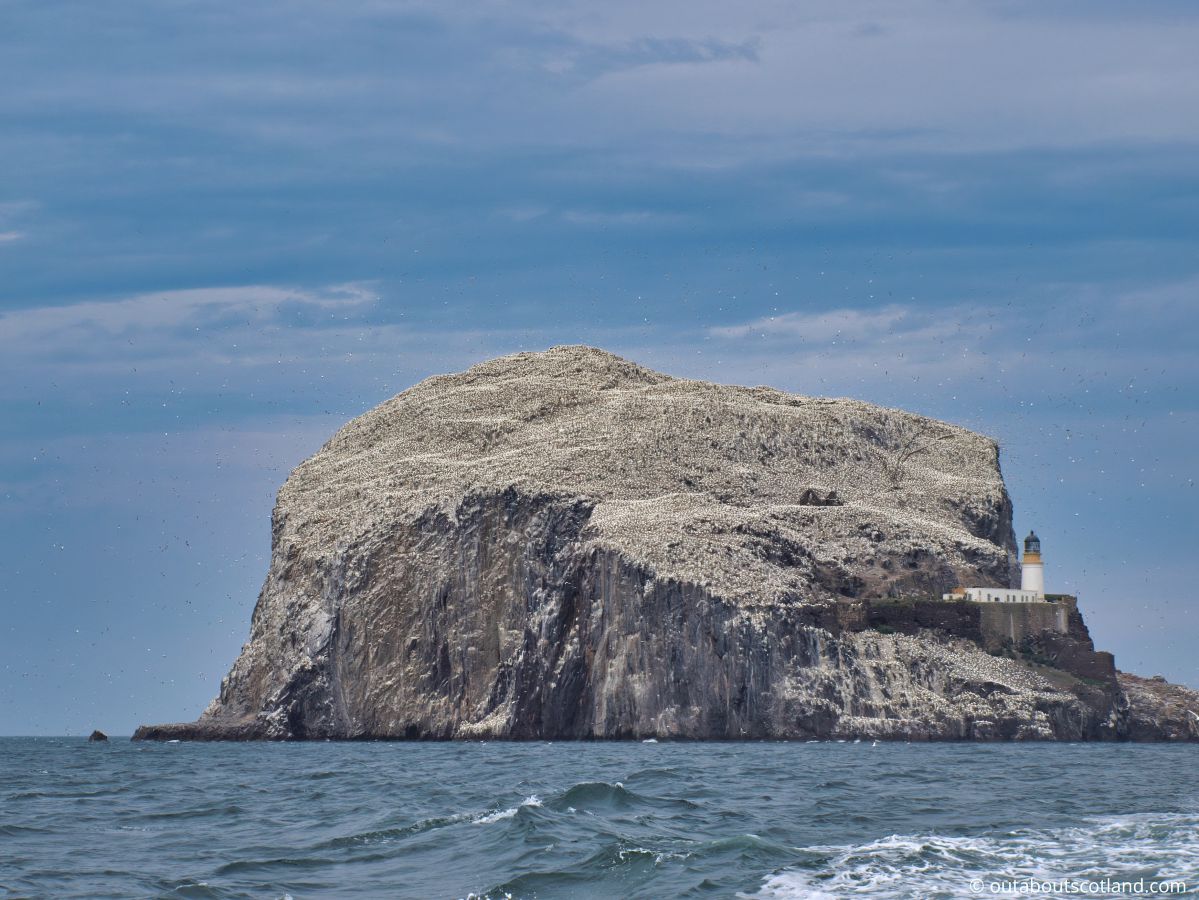
The quaint East Lothian coastal town of North Berwick has a lot going for it. In addition to the cute shops and cafés of the old fishing port, there’s Tantallon Castle and Berwick Law in the immediate area, as well as pristine stretches of golden beach to the east and west. There’s also Bass Rock, a short distance offshore, and the Scottish Seabird Centre in North Berwick, which runs frequent boat tours to it.
One of the great things about the seabird centre is that they’ve installed interactive cameras on Bass Rock as well as a couple of other islands in the Firth of Forth, so you can watch the puffins go about their business without disturbing them in any way.
These solar-powered cameras let you zoom in close on the wildlife from the comfort of the centre, which means the birds are free of human contact, and it’s the only place (that I know of) where you can watch puffins in this way.
The centre also has a viewing platform with high-powered binoculars if you feel watching a TV screen is a bit too hands-off, but for the ultimate puffin-viewing experience you need to get out into the water, which is where the tour boats come in.
Tours can be booked online or at the centre and there are a few options in price and duration. You can take a three-island seabird safari which departs from North Berwick and visits the Lamb, Craigleith, and Bass Rock islands, you can take a private charter on a rigid inflatable, or you can book yourself onto a Bass Rock landing experience.
The inflatable tour will get you to Bass Rock in double-quick time, but prepare to get wet if the sea’s a bit choppy. The three-island tour takes a catamaran, which is much gentler but only sails around the islands. The landing experience, meanwhile, lets you walk around Bass Rock’s designated walkways to view the seabirds and native seals from just a few feet away, but it’s quite an expensive experience at around £140 per person.
If you want to find out more about the Scottish Seabird Centre, Rock, and other attractions in this part of the country, check out The Best Places to Visit in East Lothian.
Puffins at St. Abb’s Head
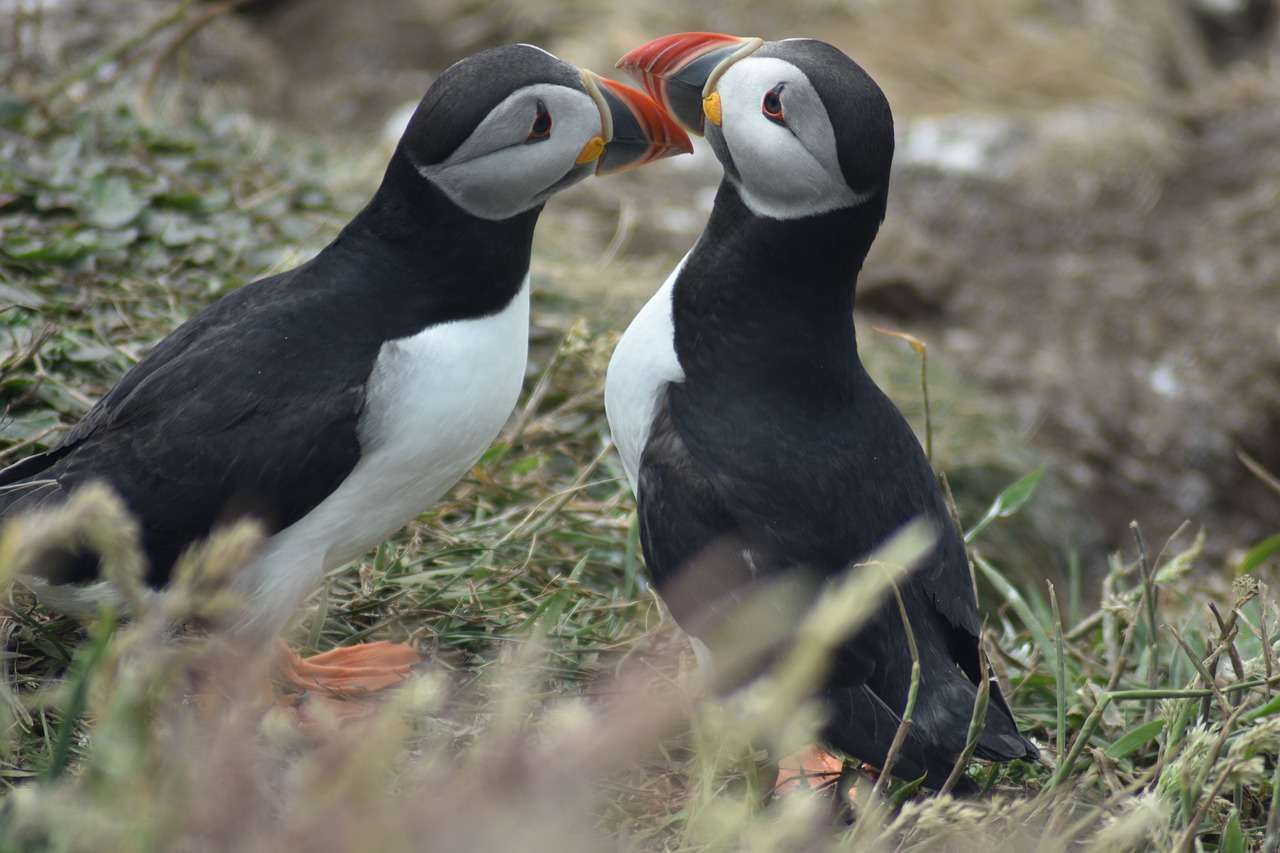
St. Abb’s Head National Nature Reserve lies on the Berwickshire coast, five miles north of Eyemouth, between Dunbar and Berwick-Upon-Tweed. This part of Scotland’s coastline is wild and rugged due to the volcanoes that formed it, leaving behind a magnificent stretch of sheer-sided cliffs and offshore sea stacks.
It’s an incredibly atmospheric place that really comes alive in the summer months thanks to the unusual mix of both Atlantic and Arctic animal species that thrive in the dense forests of seaweed growing close to the shoreline. And thanks to the huge shoals of fish that live there it’s also a haven for puffins.
The cliff faces and deep gullies of St. Abbs Head act as the perfect home for seabirds and you’ll usually see kittiwakes, razorbills and guillemots crowded into every available space, but it’s the puffins that are the biggest draw to the site.
Unlike other seabirds which nest on grassy ledges and flat rocks, puffins prefer deep crevices in the cliffs where they can hide their eggs, but you can at least get a good view of them when they fly back to their nests after a day of hunting.
If you visit St. Abbs Head keep that thought in mind as you’ll get the best views in the early morning when they set off and the early evening when they return, but don’t worry too much if you miss them as you’ll see thousands of other birds throughout the day.
There are a couple of National Trust for Scotland-designated paths in the nature reserve that run close to the cliff edge and others that circle a nearby loch, but please note that the NTS makes a point of asking you not to explore the rest of the site as you could upset the breeding pairs of birds.
This is explained in detail at the St. Abbs Head visitor centre, which explains how human disturbance stresses the birds and causes them to leave their nests, but the three-mile circular walk through the reserve is so nice you shouldn’t feel the need to go anywhere else anyway.
Puffins at Duncansby Head
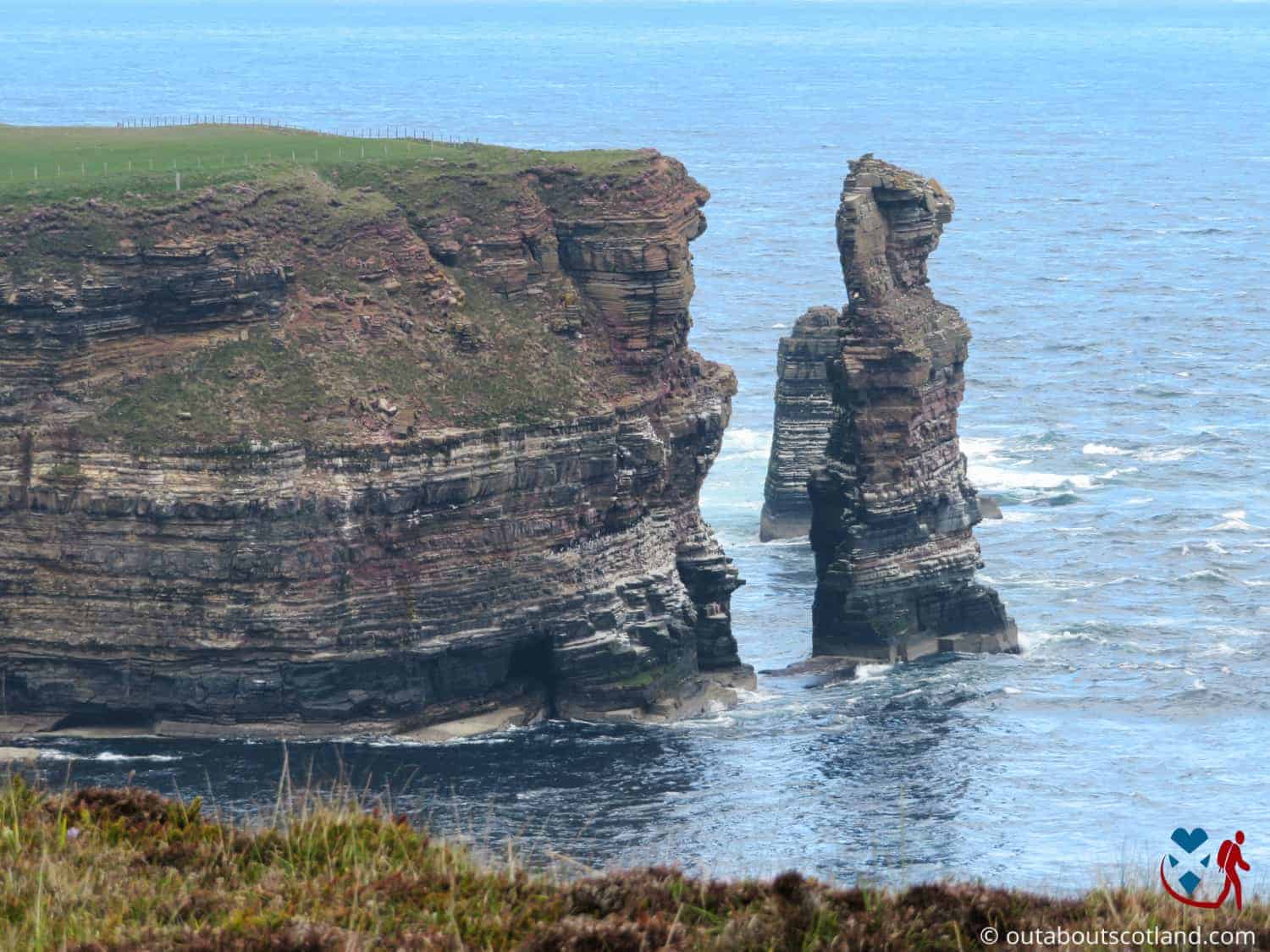
Duncansby Head is located in the far north of Scotland, a few miles east around the coastline from John O’ Groats. This is one of the remotest parts of the Scottish mainland, but it gets quite busy due to the tourist trap attractions at the John O’ Groat’s visitor centre, although the picture-postcard scenery more than makes up for it.
The cliffs in this part of Scotland are steep and crumbling due to being comprised of different types of rock, and they’ve become a bit of a tourist attraction in their own right due to the number of seabirds that call the monumental sea stacks their home.
You can walk there from either John O’ Groat’s car park or from the nearby car park at the Duncansby Head lighthouse, but if the weather’s nice, I suggest you take the longer path as the coastline really is stunning and you’ll find great flocks of birds circling overhead all along the water’s edge.
Although the Duncansby Stacks are the highlight of a visit (they’re absolutely enormous) if you go there to look for puffins you might want to have a good look at the deep gorge known as the Geo of Sclaites that lies between the stacks and the lighthouse. The gorge sits in the middle of an area that’s designated as a Site of Special Scientific Interest, and it’s a truly impressive place, with sheer cliff faces that plummet hundreds of feet down to the crashing waves below.
There are fences all around but I’d definitely keep children and dogs under control, especially if there’s a chance they’ll try to get closer to the nesting birds. The puffins at this site like to hide away in the most inaccessible cracks and ledges they can find so it’s often difficult to see them, but there are a few nesting sites at the innermost part of the gorge near the path, so if you’re lucky you might get a good close-up view.
Walking further east for half an hour will take you to the three Duncansby Stacks which you’ll be able to see reasonably closely at several viewing points, but as the cliffs are so steep it’s basically impossible to see them from ground level unless you take a boat ride from a seaward approach.
Even so, from the top of the surrounding cliffs, you’ll get amazing views of the thousands of seabirds that call the Caithness coastline their home, and you’ll frequently see puffins amongst the guillemots and gulls that noisily screech overhead.
Puffins at Faraid Head

This is another gorgeous part of north Scotland that’s wild, windswept, and only lightly inhabited by humans, making it a perfect nesting site for the small colony of puffins that call the cliffs and dunes their home. To be honest, I’d probably recommend Faraid Head for a visit even if there weren’t any puffins, as the view across Balnakeil Bay is spectacular.
Vast stretches of golden sand and an azure-blue sea are the order of the day, and it’s remote enough that you’ll frequently find you’re the only person there, no matter the time of year.
To get there, follow the A838 in Sutherland towards Durness and then continue towards the village of Balnakeil which ends abruptly at the start of a beach with a partially sand-covered road winding its way towards the remnants of a 1950s radar station. Follow the water’s edge north and you’ll eventually arrive at a cliff edge which is the puffin’s favourite nesting area and the location of gorgeous views across the Pentland Firth.
As with elsewhere in Sutherland, the puffins come ashore to breed in late April and usually stay till late August, so if you’ve come to this part of the country to do a summer tour of the North Coast 500 you might as well take the short detour to Faraid Head to say hello to them.
As a top tip, no visit to this corner of Scotland would be complete without a visit to Smoo Cave which is only two miles east of Balnakeil. Smoo Cave is one of the biggest sea caves in the UK, and it sits at the end of a long, steep-sided gorge.You can take a tour deep inside the cave (for a small fee), and there’s a lovely walk around the peninsula surrounding it, which is another favourite spot for seabirds.
Where to See Puffins on Scotland’s Islands
While it’s almost impossible to name every cliff face on the mainland that puffins like to call home, there are a few islands that are famed for their puffin colonies. These islands generally have the same geology (high cliffs) and location (remote and largely uninhabited), which explains why the birds choose to live there, although islands like Lunga are seeing increasing numbers of tourist groups.
Some of the other islands are so difficult to get to they’ve escaped the disturbances of Scotland’s tourism industry, although even St. Kilda – the UK’s remotest island – now has regular tour boats offloading people for day trips.
Puffins on the Isle of Lunga
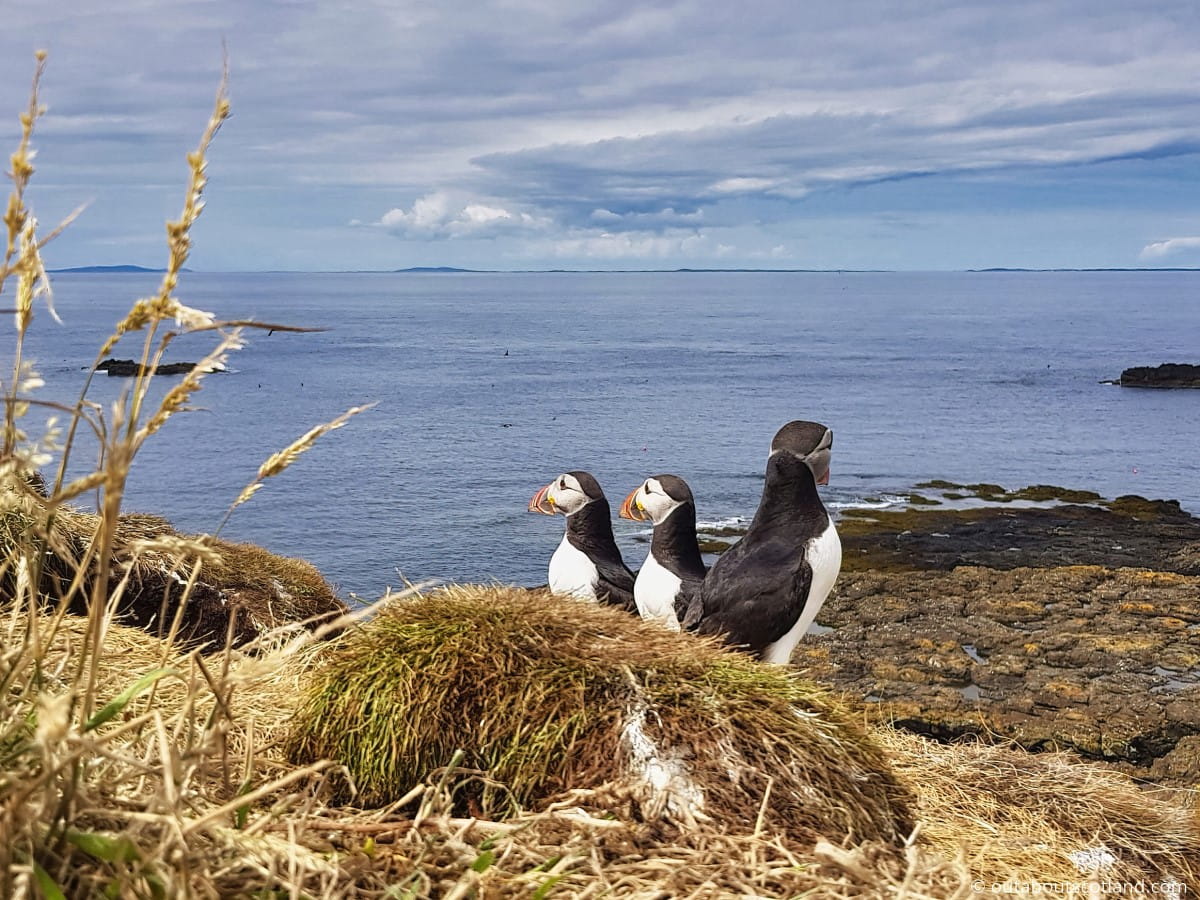
The Isle of Lunga is one of the Treshnish Isles which lies between the Isle of Tiree and the Isle of Mull on Scotland’s west coast. This is a small volcanic plug of rock that has been designated a Site of Special Scientific Interest thanks to its abundant plant life,some of which is endangered, as well as the surprising amount of wildlife that callss the island their home, including grey seals, guillemots, storm petrels, and, of course, puffins.
Approximately 47 different bird species can be spotted at various times of the year on Lunga, but if you want to see puffins the best time to visit is from mid-April to early August when they land to raise their chicks. Later in the year, the puffins move further out to sea, though other birds like barnacle geese move in from the freezing conditions of Canada and Greenland, so you’re pretty much guaranteed to see wildlife whenever you visit.
The Treshinish Isles are a real wildlife lover’s paradise, and in addition to the puffins, you’ll frequently see porpoises, dolphins, and basking sharks, as well as the occasional minke whale. The only way to get to Lunga is via an organised tour, and you’ll have to stick to their strict time limits as the time spent on the island is kept to a minimum to cause as little disruption to the birds as possible.
Expect a full-day tour to include a maximum of two hours on Lunga, which, admittedly, isn’t much time, but because these wee islands are so remote, the birds are remarkably tolerant of people, and you’ll find yourself creeping up to them almost nose to beak. You might get a curious stare or two, but they’re generally not scared of people, which makes Lunga one of the best places for photographing puffins in Scotland.
Fingals Cave, an incredible sea cave made entirely of hexagonal lava columns, is the main attraction of the Treshinish Isles, aside from puffins. The acoustics in Fingals Cave are so astonishing that they inspired Felix Mendelssohn to write an essay about them and Jules Verne to include them in several of his books. It was even said to be Queen Victoria’s favourite place in Scotland.
Puffins on St. Kilda
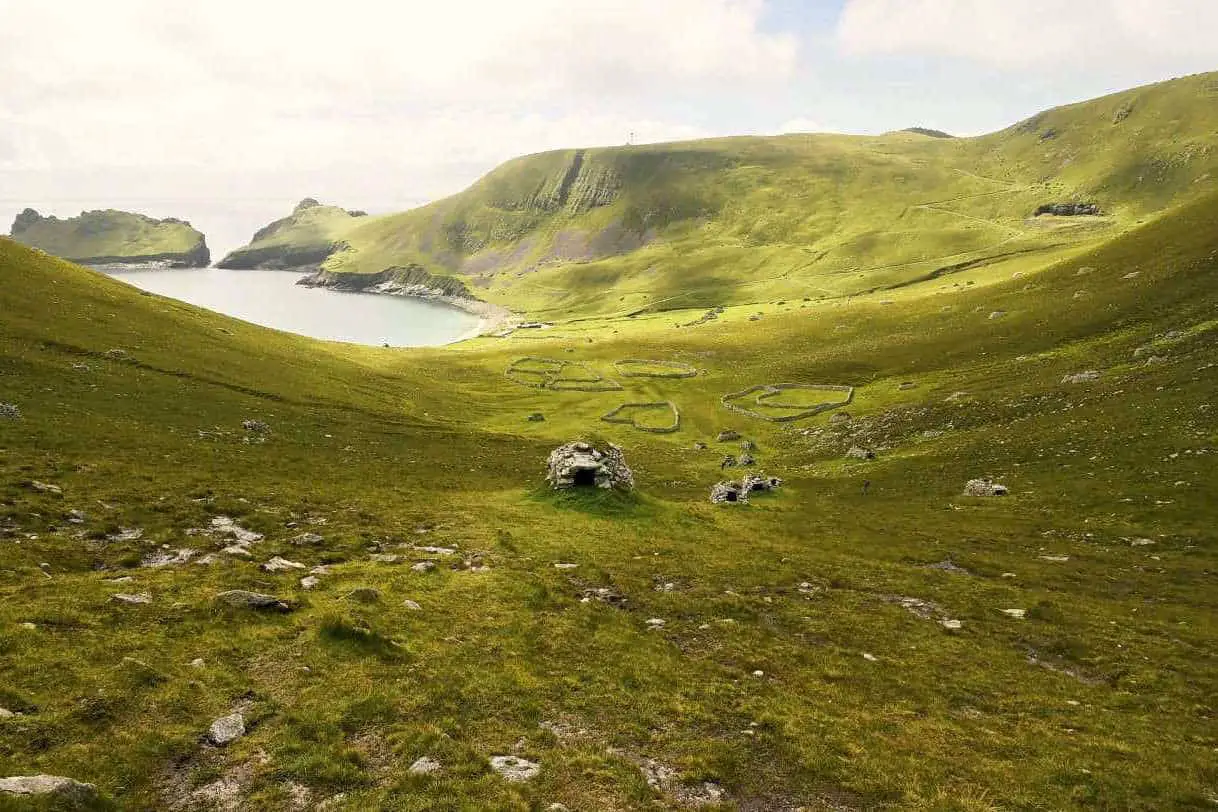
The UNESCO World Heritage Site of St. Kilda is by far the most remote place to see puffins on this list, but anyone who loves Scotland should try to visit it. This tiny archipelago is situated about 40 miles northwest of North Uist (itself a remote Outer Hebridean island), and it’s the most westerly point of land in the UK.
Uninhabited by humans for over ninety years, St. Kilda has returned to nature with just a few ruined buildings on the main island of Hirta left to tell the tale of the people who lived there before they were evacuated in 1930.
Getting to these islands requires catching a ferry from the mainland town of Oban to North Uist or the island village of Stein on Skye. From there, it’s a four-hour boat ride to Hirta across unpredictable seas,but once at the enclosed village bay, you’ll find yourself protected from the howling weather by a crescent of towering hills that encircle the old settlement on all sides.
The low-lying bay rises gently towards the hills behind it, which are. Kildans built their houses there, as the hills offer protection from the winds that batter the rest of the island. Even so, life must have been terribly difficult, as the rough seas made fishing almost impossible, and the islander’s only other source of protein was the seabirds that nested on the cliffs,most notably puffins, which were easily caught with long poles and nets.
Although each islander consumed around ten puffins every day, the birds managed to cling to survival on the perilous cliff faces, and today their numbers are larger than ever. That’s one of the reasons why UNESCO has granted St. Kilda the dual status of a Natural and Cultural World Heritage Site – one of the few places in the world to have the honour.
There are now an estimated one million seabirds living on the islands which is a wonderful achievement, but the downside for tourists is that it’s very smelly in the areas where they nest because there are so many of them. Still, at least you can escape the pong if you take powerful binoculars with you.
Puffins on the Shetland Islands
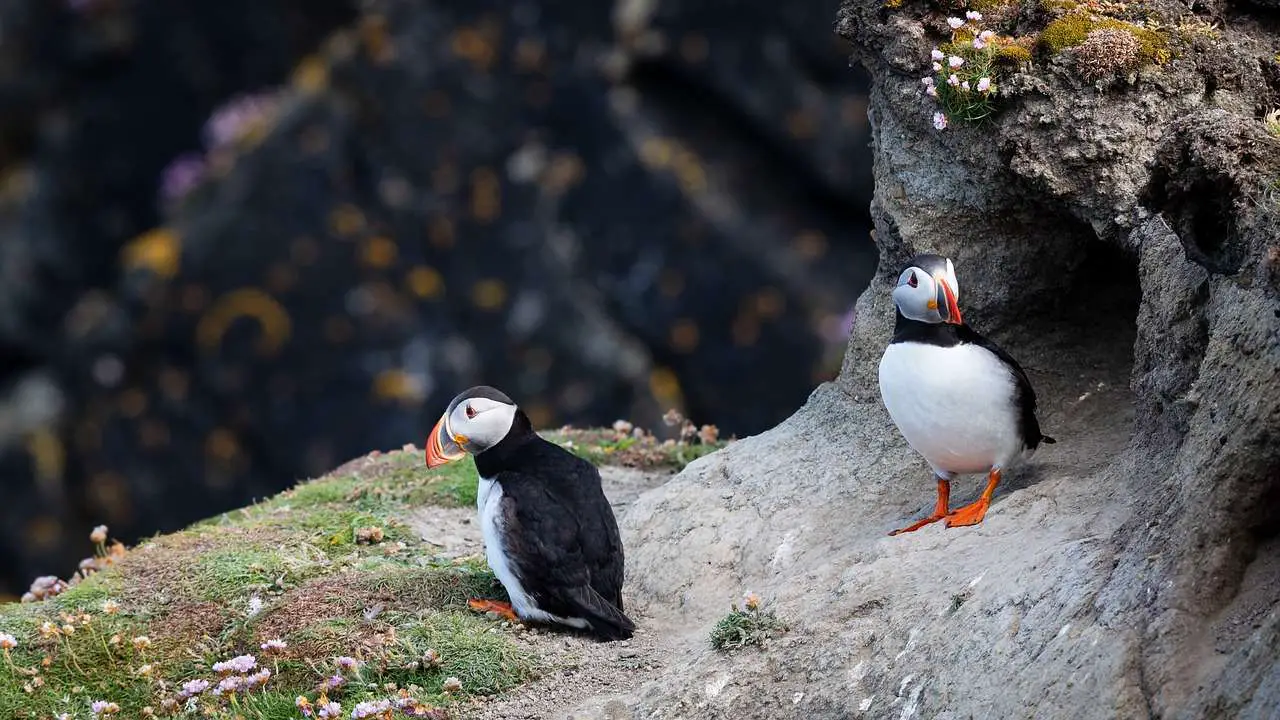
The Shetland Islands aren’t quite as inaccessible as St. Kilda but they’re still fairly remote, and visiting them requires either a choppy ferry ride from Aberdeen or a flight from Glasgow. There are other departure points in Scotland but those are the two most used. I recommend you fly as the last thing you want to be doing on a holiday is dealing with seasickness in the North Sea.
The Shetland Islands lie 190 miles north of the Scottish mainland so they’re quite close to Scandinavia, and many of the islanders claim to have as much in common with Norway as they do with Scotland.
That might be because there’s a massive Viking influence in the Shetland Islands, and you’ll find lots of Norse influences like the magical Up Helly Aa fire festival held annually in January, Mousa Broch (one of the largest ancient forts in the world), and Jarlshof, which is the site of a 9th-century Viking settlement.
Other than its fascinating history, Shetland boasts one of the most diverse wildlife areas in the British Isles and it’s very popular with seabirds, no doubt because no spot on the islands is more than three miles from the sea.
Around most of the coastline, rugged cliffs act as homess to thousands of pairs of birds, and in the summer months, there are fantastic seabird-spotting opportunities, with over a million of them (one-tenth of Britain’s total seabird population) swooping across the islands.
Popular sites for wildlife tours include Foula, Noss, and Hermaness where you can see vast flocks of gannets, arctic terns, and skuas, and Sumburgh Head which is the site of one of the world’s biggest puffin colonies.
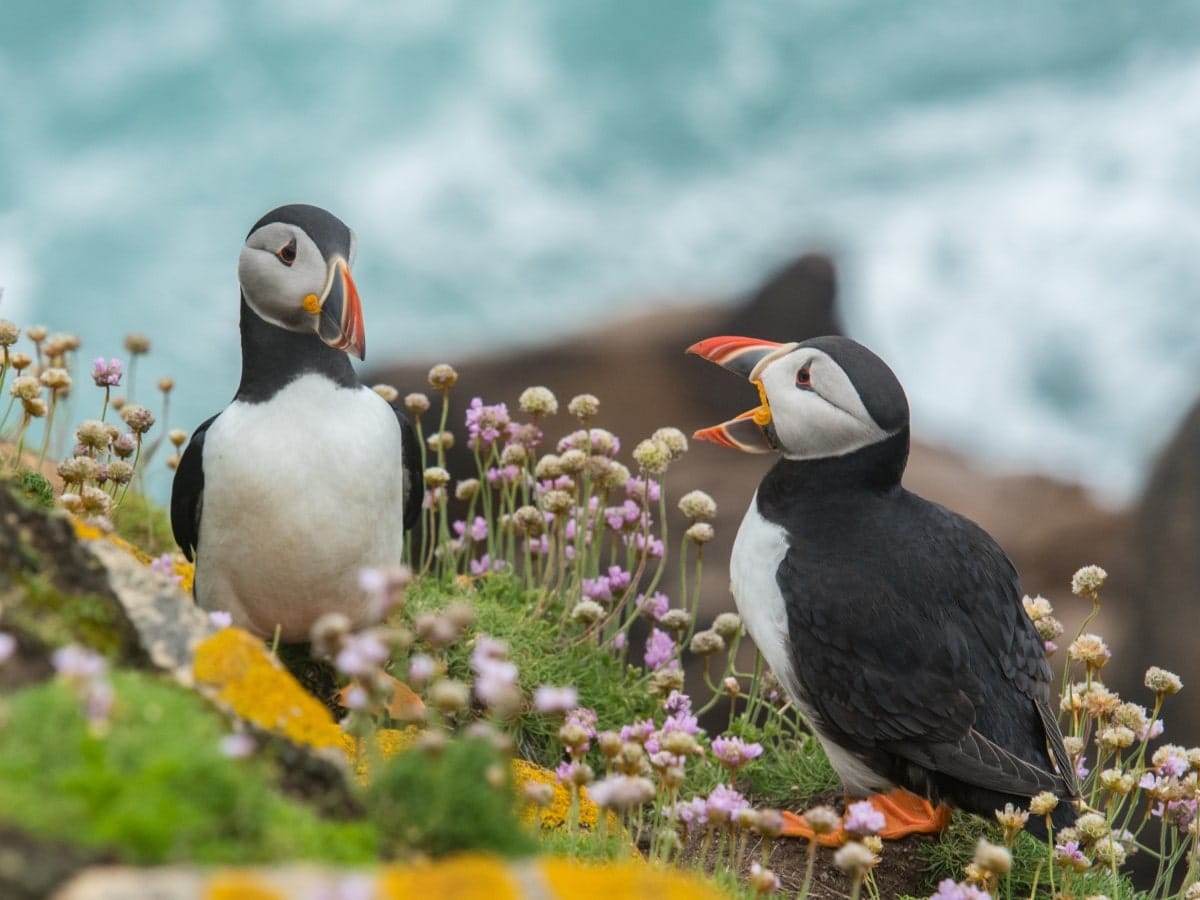
The conditions at Sumburgh Head are perfect for puffins and in the summer it’s one of the few places where you can get up close to them without scaring them away. Winter is a bit of a different story as the puffins like to move elsewhere when the temperature drops but you’ll still see fulmars, shags, gulls and guillemots in the area.
The steep cliffs of Sumburgh Head provide lots of protective nooks and crannies for a multitude of birds to nest in and each species has its own favourite area, but the puffins seem to like burrowing into the soft soil at the very top of the cliffs.
This spot is quite near the car park, so you don’t even need to walk that far to see them, which has made Sumburgh Head one of the most accessible puffin colonies in Britain. The entire area has been designated an RSPB nature reserve, and the facilities are quite good for such a remote place, with plenty of parking spaces, toilets, a visitor centre at Sumburgh Head lighthouse, a café, and a wee shop.
It’s even close to an airport so you could take a flight in just to see the puffins before heading elsewhere.
Another great location to see puffins is Noss Island, which is regarded as one of the most spectacular wildlife sites in Europe. Noss is a short boat ride from the Shetland capital of Lerwick, and it’s well worth the journey if you’ve any interest in wildlife. There are over 23,000 gannets, 24,000 guillemots, and 10,000 fulmars on this small outcrop, and in the breeding season, the chorus of more than 150,000 chicks and adults is unforgettable.
The Best Puffin Tours in Scotland
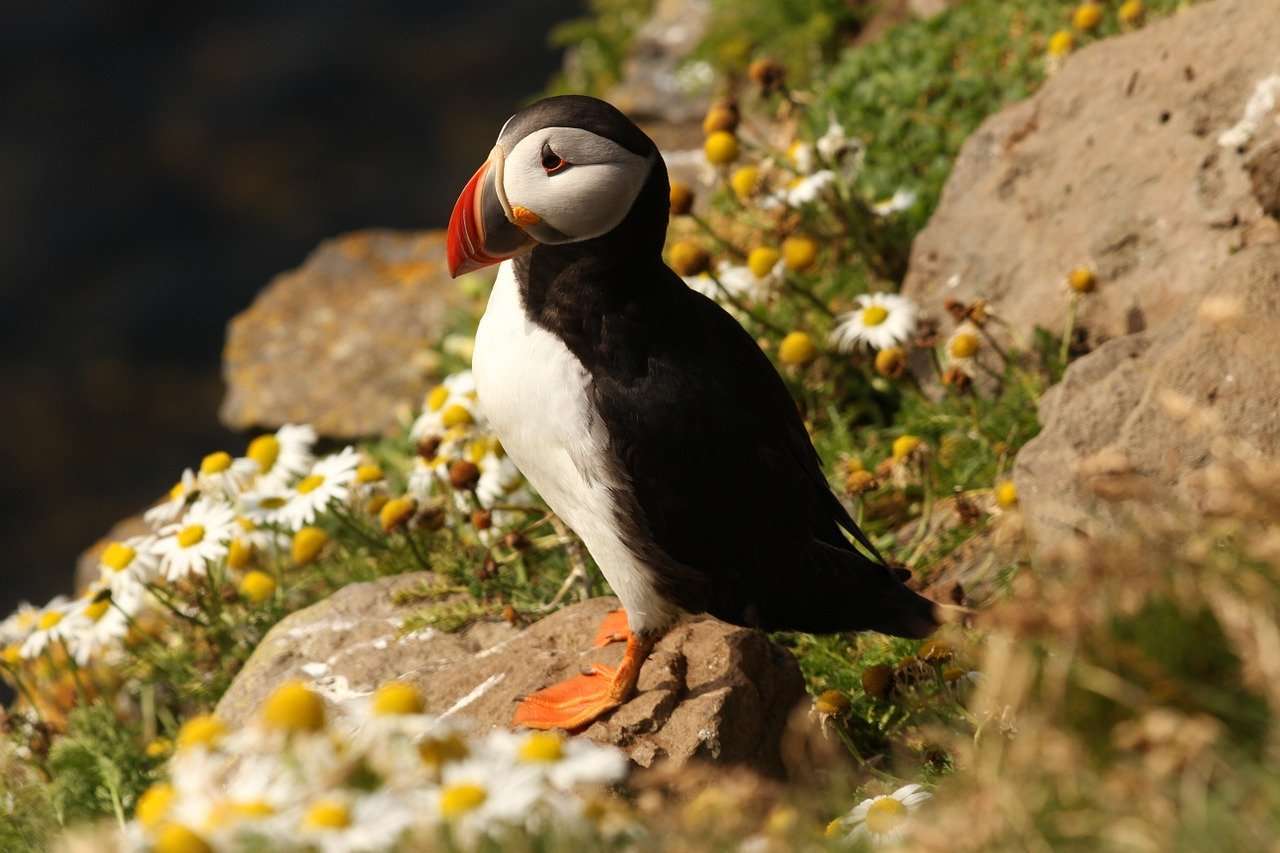
The Scottish Seabird Centre for the Firth of Forth: Enjoy an hour-long cruise around the island of Craigleith and the Bass Rock – the world’s largest colony of Northern gannets. See puffins in their natural habitats on the Firth of Forth. Telephone 01620 890202.
Staffa Tours for the Treshinish Isles: At Treshnish, spend time ashore with the huge colonies of Puffins and other sea birds, and then explore the geological splendour of Staffa’s hexagonal pillars and caves. Telephone 07831 885985 or 07732912370.
Basking Shark Scotland for the Treshinish Isles: Visit the Treshnish Isles Special Area of Conservation, a highly important area for seabirds. There can be up to 3,000 puffins on the island at any time, in addition to other seabirds such as razorbills, guillemots, and fulmars. Telephone: 07975 723140.
West Coast Tours for the Treshinish Isles: This tour includes two hours on Lunga where you can visit the puffin colony before heading to Staffa, followed by two hours on Iona to explore and seek out the rare corncrake. Telephone 01586 552319.
Shetland Explorer Tours for the Shetland Islands: Head to Sumburgh, the southernmost point of Shetland to see the puffins which are guaranteed to be seen in May, June and July. Telephone 01950 477384.
Shetland Seabird Tours for the Shetland Islands: The ultimate Shetland wildlife experience and an unrivalled wildlife spectacle offering close seabird & seal encounters with the awesome Noss’s Seabird City’ backdrop. Telephone: 07767 872260.
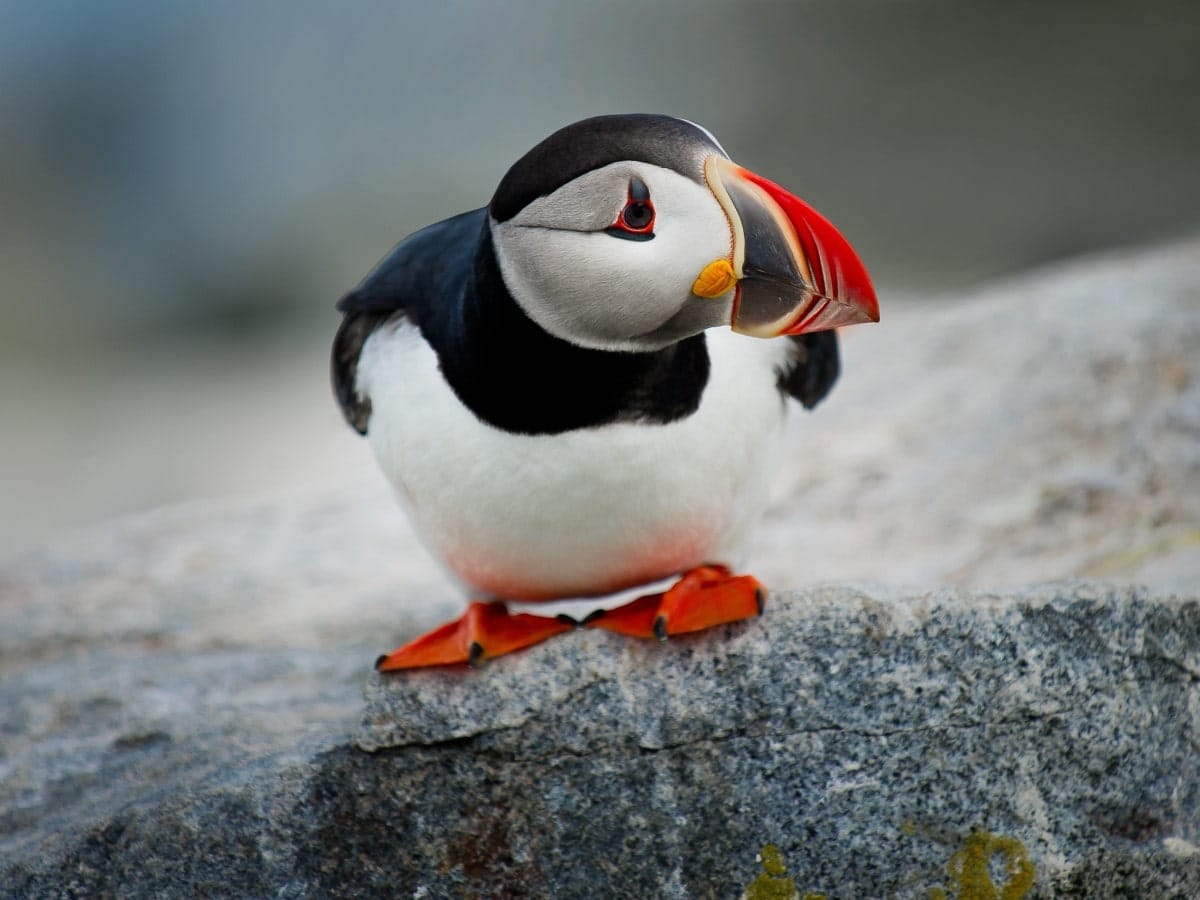
Seabirds and Seals for Shetland Island tours: Photographic opportunities with the awesome Noss cliffs in the background. View 25,000 gannets, thousands of guillemots and hundreds of puffins, razorbills, black guillemots, gulls, shags and skuas. Telephone 07595 540 224.
Go to St. Kilda for St. Kilda tours: See north-west Europe’s largest seabird colony including the UK’s largest colony of Atlantic puffin, northern fulmar, and one of the world’s largest gannetries. Telephone 07789 914144.
Sea Harris for St. Kilda tours: Sail past the highest sea cliffs in the UK, teeming with seabirds, and walk along the deserted street of Village Bay, abandoned in 1930 after 2,000 years of continuous habitation. Telephone 01859 502007.
Kilda Cruises for St. Kilda Tours: Visit one of the most important seabird colonies in Europe. The spectacular cliffs and sea stacks are a dream destination for ornithologists, with puffins, fulmars, guillemots, and one of the world’s largest populations of gannets. Telephone: 01859 502060.
Bird Watching Binoculars
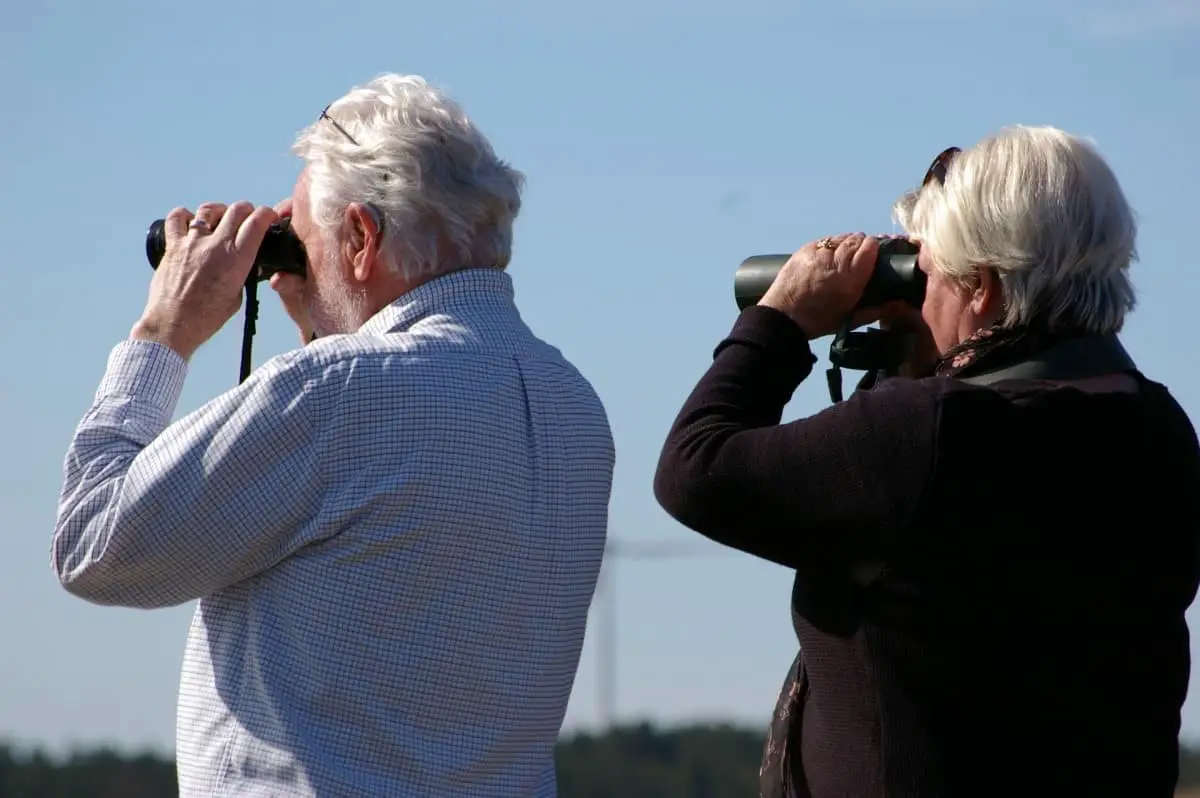
If you’re travelling anywhere to watch puffins there’s one accessory that’s an absolute necessity, and that’s a good pair of binoculars. A small investment in quality optics will repay you many times over when sightseeing in Scotland, especially when travelling to the Highlands where Scotland’s wildlife is shy and almost always only visible in the distance.
Choosing the right binoculars depends on several factors, but the most important consideration is their magnification and lens diameter. These specifications are always listed as a number, like 8×20 or 10×50, where the first number is the magnification factor and the second is the size of the lens, which determines how bright the image appears.
There are so many choices that it can be a bit overwhelming, but for general use, you should look for a magnification factor of 8x or 10x. It can be tempting to go for a higher power, but bear in mind that the higher the magnification, the more shake you’ll get when looking through them and the less overall view you’ll have of the scene. This is a big deal when bird watching, as you need a wide field of view in order to track the birds as they fly through the air.
For the lens diameter, get the highest you can afford; just be aware that the price and the weight shoot up considerably as the brightness increases. If you do end up purchasing a big, heavy pair of binoculars, you’ll find a tripod is an absolute necessity, so make sure your pair has a metal 1/4 or 3/8th thread built-in so you can attach a tripod or a monopod.
Camera tripods are great as you can leave them positioned all day without having to hold onto them, whereas monopods require you to hold them upright, but they’re much easier to carry. Alternatively, you can now get binoculars that have inbuilt gyroscopic stabilization that provides a rock-steady image while hand-holding them.
These binoculars are a real game-changer, but they’re much more expensive than an equivalent standard pair of binoculars. I suggest paying the extra and looking at it as an investment that will last for years. The best brands are usually generally the best-known, so look for Nikon, Canon, and Olympus, but some cheaper brands like Praktica are now offering 90% of the optical quality of the big names for less than half the price.
Facts About Scottish Puffins
- Puffins are part of the bird genus Fratercula which belongs to the auk family.
- Their favourite foods are sand eels, herring, and capelin. Capelin are a sprat-like North Atlantic fish.
- Adult puffins eat in excess of forty fish every day.
- The birds often fly for two hours to get to their hunting grounds.
- The name ‘puffin’ is an old-English word originally used to describe the unrelated Manx shearwater.
- Baby puffins are called pufflings. Awh!
- They’re highly intelligent birds. Researchers have discovered that puffins use sticks to scratch body parts their bills won’t reach.
- Horned puffins dig burrows up to three feet underground.
- Breeding pairs only raise one chick at a time. The egg (which weighs one-fifth of the adult’s body weight when laid) is incubated for around forty days.
- Puffins can live for up to thirty years.
- Males and females look identical, except that the males are slightly larger.
- During the breeding season, the males grow a bright orange coating over their bills which flakes off once the season ends.
- The Firth of Forth has more than fifty thousand occupied puffin burrows.
- Although Scotland is famed for its puffins the largest colony in the world is in Iceland which is home to over four million birds.
- The islands of St. Kilda that lie around one hundred miles west of the Scottish mainland were once a prime puffin hunting ground as the fatty meat was a prized source of food. They are still hunted in Iceland.
Frequently Asked Questions
Where are the most popular places to see Puffins in Scotland?
The Bass Rock in East Lothian. St. Abbs Head in Berwickshire. Duncansby Head near John O’ Groats. Faraid Head in Sutherland. The Isle of Lunga. The Isles of St. Kilda. The Shetland Islands.
What tours can I join to see Puffins?
The Scottish Seabird Centre for the Firth of Forth. Staffa Tours for the Treshinish Isles. Shetland Seabird Tours for the Shetland Islands. Go to St. Kilda for St. Kilda tours.
What do Puffins like to eat?
Their favourite foods are sand eels, herring, and capelin. Capelin are a sprat-like North Atlantic fish.
Where do puffins go in the winter?
Puffins come ashore to breed in late spring. After the breeding period they spend the rest of the year in the North and Atlantic Oceans in large flocks known as ‘rafts’.
What time of year is best for puffins in Scotland?
Puffins spend most of their time at sea and only come ashore for a few months each year, so the best time to see them on land in Scotland is from April to July.

